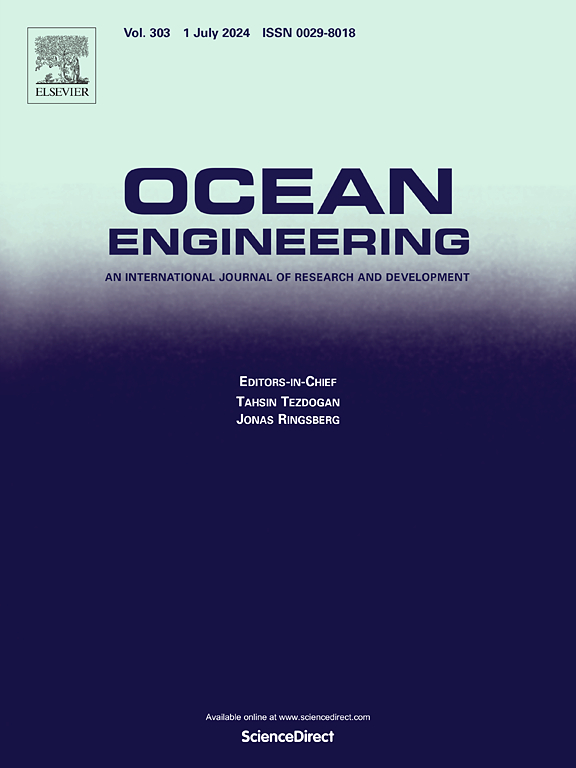Responses of offshore wind turbines with different power capacities on tetrapod jacket systems under dynamic loads in layered clay
IF 5.5
2区 工程技术
Q1 ENGINEERING, CIVIL
引用次数: 0
Abstract
Tetrapod piled jacket (TPJ) foundations have been widely employed to support offshore wind turbines (OWTs). The dynamic response of TPJs in layered soil under combined environmental and seismic loads remains insufficiently understood—especially regarding the kinematic and inertial effects across varying rated powers and water depths. Thus, this study employs advanced three-dimensional finite element simulation to comprehensively analyze the seismic responses of three semi-rigid-piled TPJ systems in layered clay deposit. The results indicate that when environmental and seismic loads act simultaneously, their effects on the TPJ's deformation tend to counterbalance each other. The peak acceleration of the TPJ structure locates at the height of z/LT = 0.5–0.6, whose response is governed by the its third-order fore-aft mode. In addition, the lower-capacity TPJ-supported OWTs shows greater sensitivity to dominant seismic excitation frequencies and the variations in the stiff clay layer thickness than higher-capacity systems. Also, it exhibits minimal pile-soil response differences due to stronger pile-group effects. For all three TPJ systems, the peak values of the acceleration envelope consistently occur near the depth of soil layer interface, where a distinct accumulation of soil shear strain is observed. These findings offer valuable insights into TPJ system dynamic response in complex marine environments.
层状粘土中动力荷载作用下不同功率容量海上风力发电机四足套架系统的响应
四足桩夹套(TPJ)基础已广泛应用于海上风力发电机组。层状土壤中TPJs在环境和地震联合载荷下的动力响应仍然没有得到充分的了解,特别是在不同额定功率和水深下的运动学和惯性效应。因此,本研究采用先进的三维有限元模拟技术,对层状粘土沉积中三种半刚桩TPJ体系的地震反应进行了综合分析。结果表明,当环境荷载和地震荷载同时作用时,它们对TPJ变形的影响趋于相互抵消。TPJ结构的加速度峰值位于z/LT = 0.5 ~ 0.6高度,其响应受三阶前后模态支配。此外,与高容量体系相比,低容量tpj支撑的owt体系对主要地震激励频率和刚性粘土层厚度的变化表现出更大的敏感性。同时,由于桩群效应较强,桩土响应差异最小。对于所有三种TPJ系统,加速度包络线的峰值一致出现在土层界面深度附近,在那里观察到明显的土壤剪切应变积累。这些发现为研究复杂海洋环境下TPJ系统的动态响应提供了有价值的见解。
本文章由计算机程序翻译,如有差异,请以英文原文为准。
求助全文
约1分钟内获得全文
求助全文
来源期刊

Ocean Engineering
工程技术-工程:大洋
CiteScore
7.30
自引率
34.00%
发文量
2379
审稿时长
8.1 months
期刊介绍:
Ocean Engineering provides a medium for the publication of original research and development work in the field of ocean engineering. Ocean Engineering seeks papers in the following topics.
 求助内容:
求助内容: 应助结果提醒方式:
应助结果提醒方式:


